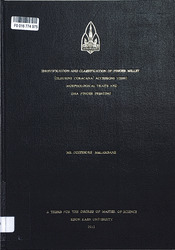| dc.description.abstract | Information on genetic diversity of germplasms is very important for every breeding program, thus evaluation and characterization of germplasms is the first and most important step for any breeding program. Different tools are now available for germplasm evaluation making the process rather quicker and less laborious like in the past where only morphological markers where the only markers available for evaluation, nowadays they arc other advanced markers like biochemical and molecular markers which are much faster and more precise than morphological evaluation. Finger millet a crop which has been neglected for a very long time by breeders thus eliminating the crop to more undesirable environments on which its yield continued to fall, but with the current increased interest in the crop because of its health associated benefits like high calcium and iron has led to need for the crop yield to be improved to match other cereals yields. Because the crop breeding program has been neglected the need to evaluate the available germplasm has risen so that the advanced breeding of the crop can successfully be launched. The objective of this study was to identify and classify finger millet accessions using morphological traits and DNA fingerprinting and further evaluate the effect of genotype, season and genotype by season interaction in yield performance of selected accessions. Eighty three finger millet accessions were planted to be evaluated over two season; to assess the performance of finger millet accessions the crops were grown in a randomized complete block design with three replications in the dry and rainy season, data was collected on yield, yield components and other agronomic traits performance over the two years under study in the Field Crops Experimental Station, Faculty of Agriculture, Khon Kaen University, Thailand during 2010-2011 growing season.Qualitative and quantitative morphological characters were used to classify and group the finger millet accessions. Characters like panicle shape which is widely used to classify finger millet cluster the accessions into four clusters. The panicle shape classification identified the wild relative belong to the....... | en_US |

